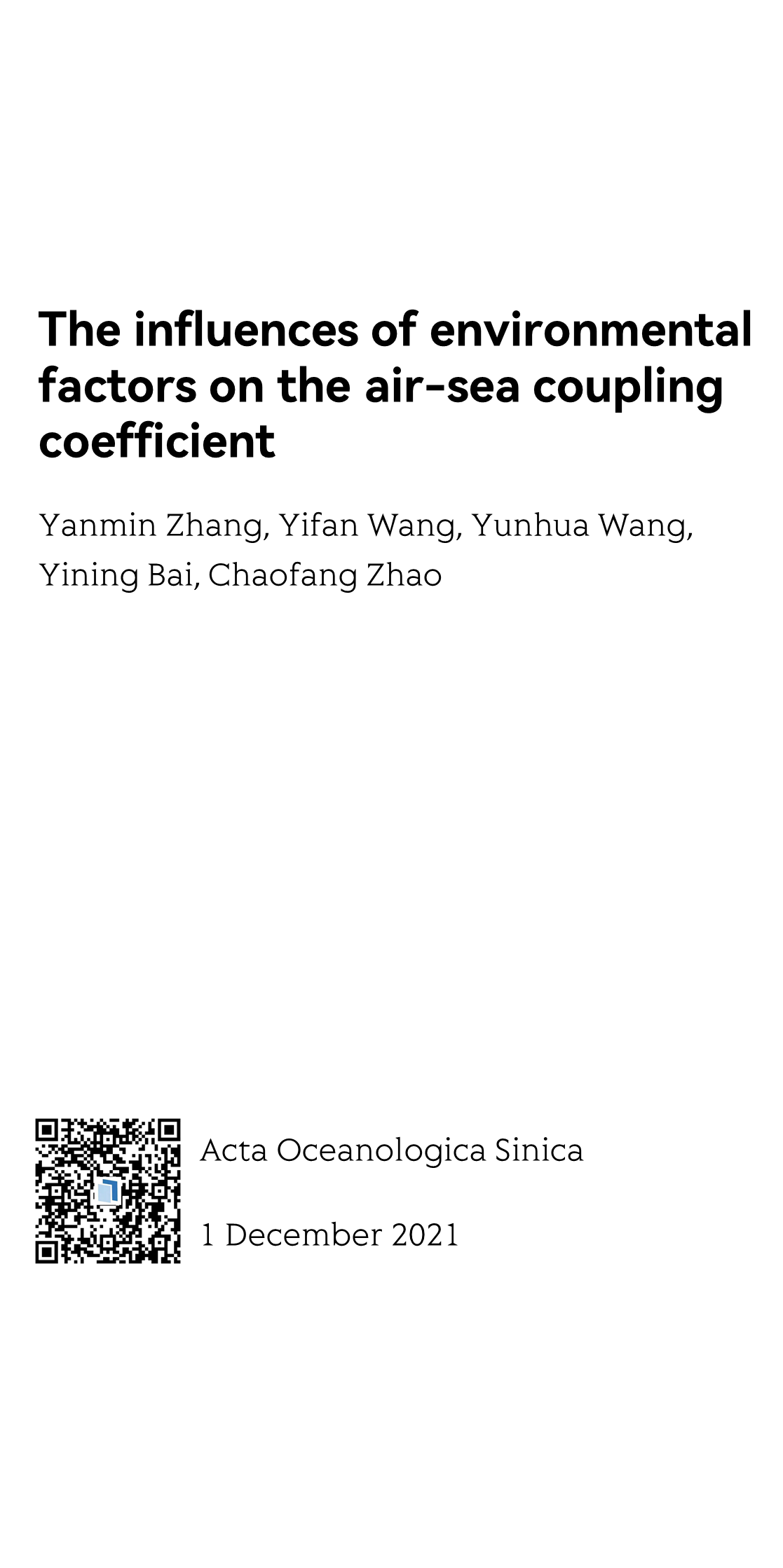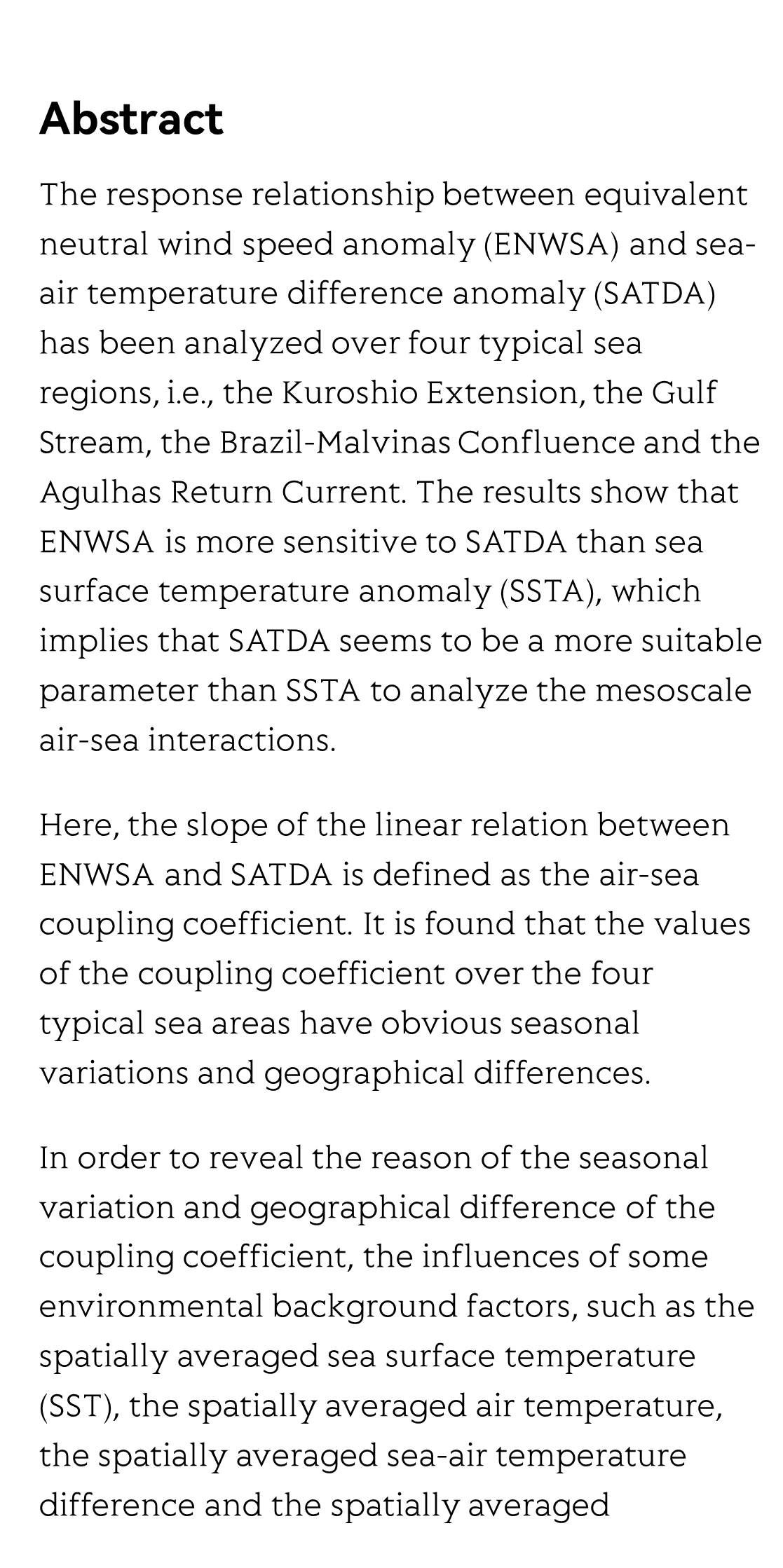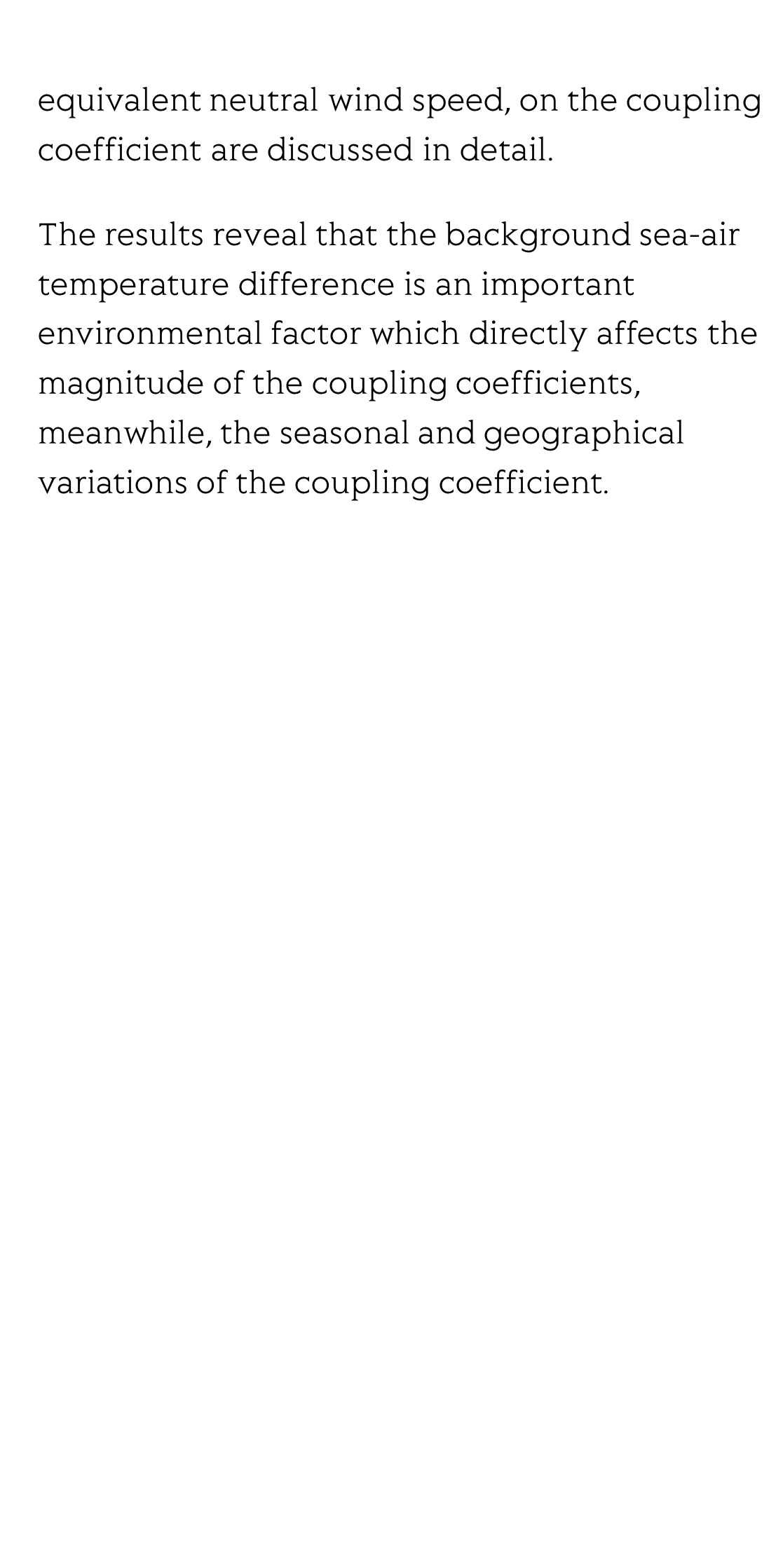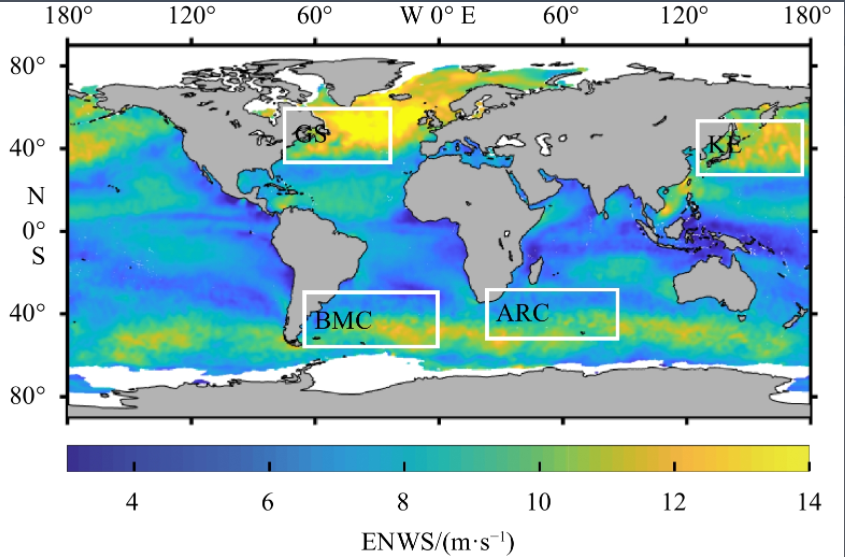(Peer-Reviewed) The influences of environmental factors on the air-sea coupling coefficient
Yanmin Zhang 张彦敏 ¹, Yifan Wang ¹, Yunhua Wang 王运华 ¹ ², Yining Bai ¹, Chaofang Zhao 赵朝方 ¹ ²
¹ College of Information Science and Engineering, Ocean University of China, Qingdao 266100, China
中国 青岛 中国海洋大学信息科学与工程学院
² Laboratory for Regional Oceanography and Numerical Modeling, Pilot National Laboratory for Marine Science and Technology (Qingdao), Qingdao 266237, China
中国 青岛 青岛海洋科学与技术试点国家实验室 区域海洋动力学与数值模拟功能实验室
Abstract
The response relationship between equivalent neutral wind speed anomaly (ENWSA) and sea-air temperature difference anomaly (SATDA) has been analyzed over four typical sea regions, i.e., the Kuroshio Extension, the Gulf Stream, the Brazil-Malvinas Confluence and the Agulhas Return Current. The results show that ENWSA is more sensitive to SATDA than sea surface temperature anomaly (SSTA), which implies that SATDA seems to be a more suitable parameter than SSTA to analyze the mesoscale air-sea interactions.
Here, the slope of the linear relation between ENWSA and SATDA is defined as the air-sea coupling coefficient. It is found that the values of the coupling coefficient over the four typical sea areas have obvious seasonal variations and geographical differences.
In order to reveal the reason of the seasonal variation and geographical difference of the coupling coefficient, the influences of some environmental background factors, such as the spatially averaged sea surface temperature (SST), the spatially averaged air temperature, the spatially averaged sea-air temperature difference and the spatially averaged equivalent neutral wind speed, on the coupling coefficient are discussed in detail.
The results reveal that the background sea-air temperature difference is an important environmental factor which directly affects the magnitude of the coupling coefficients, meanwhile, the seasonal and geographical variations of the coupling coefficient.
Flicker minimization in power-saving displays enabled by measurement of difference in flexoelectric coefficients and displacement-current in positive dielectric anisotropy liquid crystals
Junho Jung, HaYoung Jung, GyuRi Choi, HanByeol Park, Sun-Mi Park, Ki-Sun Kwon, Heui-Seok Jin, Dong-Jin Lee, Hoon Jeong, JeongKi Park, Byeong Koo Kim, Seung Hee Lee, MinSu Kim
Opto-Electronic Advances
2025-09-25
Dual-frequency angular-multiplexed fringe projection profilometry with deep learning: breaking hardware limits for ultra-high-speed 3D imaging
Wenwu Chen, Yifan Liu, Shijie Feng, Wei Yin, Jiaming Qian, Yixuan Li, Hang Zhang, Maciej Trusiak, Malgorzata Kujawinska, Qian Chen, Chao Zuo
Opto-Electronic Advances
2025-09-25







